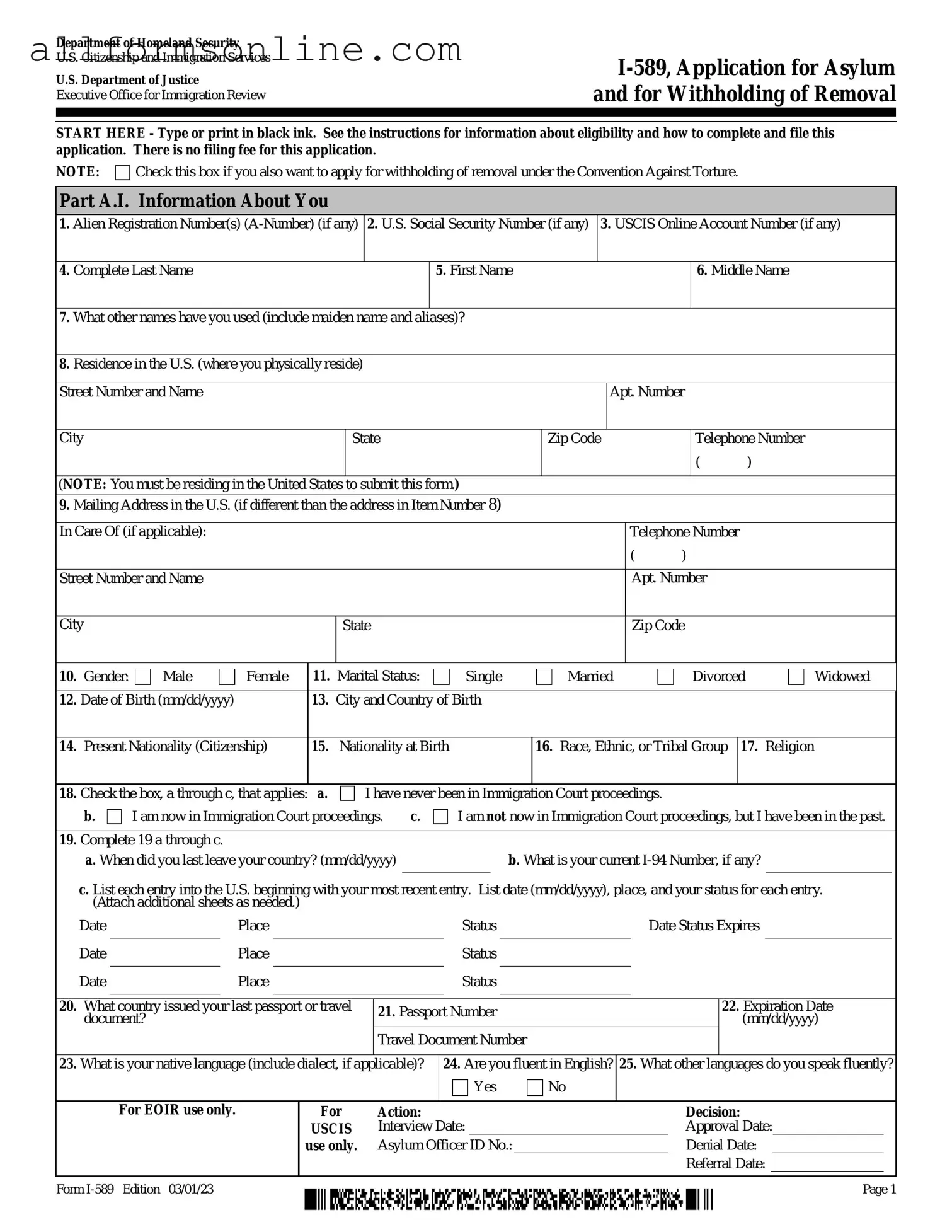What is the USCIS I-589 form?
The USCIS I-589 form is an application for asylum in the United States. It allows individuals to request protection from persecution or fear of persecution in their home country based on race, religion, nationality, membership in a particular social group, or political opinion. This form is crucial for those seeking asylum and must be filled out accurately to ensure proper processing of the application.
Who is eligible to file the I-589 form?
Individuals who are physically present in the United States and have a well-founded fear of persecution in their home country may be eligible to file the I-589 form. It is important to note that there are specific deadlines for filing, typically within one year of arriving in the U.S., although there are exceptions in certain circumstances.
How do I complete the I-589 form?
Completing the I-589 form involves providing personal information, details about your fear of persecution, and any supporting evidence. The form is divided into sections that require information about your identity, your reasons for seeking asylum, and your immigration history. It is recommended to read the instructions carefully and to provide as much detail as possible.
Where do I submit the I-589 form?
The completed I-589 form should be submitted to the appropriate USCIS service center. The specific address can vary depending on your location and whether you are filing as part of a family unit. Always check the latest USCIS guidelines to ensure you are sending your application to the correct address.
What happens after I submit the I-589 form?
Once the I-589 form is submitted, USCIS will send a receipt notice confirming that they have received your application. You may then be scheduled for an interview where you will present your case for asylum. It is essential to prepare thoroughly for this interview, as it will play a critical role in the decision-making process.
Can I include family members in my I-589 application?
Yes, you can include your spouse and children in your I-589 application. They may be eligible for asylum based on your application. It is important to provide their information accurately and to submit any required documentation to support their inclusion.
What if my I-589 application is denied?
If your I-589 application is denied, you may have the option to appeal the decision or to seek other forms of relief. It is crucial to understand the reasons for the denial and to consider consulting with an immigration attorney to explore your options moving forward.
How long does the I-589 process take?
The processing time for the I-589 application can vary significantly based on several factors, including the complexity of your case and the current workload of USCIS. It is not uncommon for the process to take several months to over a year. Staying informed about your case status can help you understand where you are in the process.
Is there a fee to file the I-589 form?
No, there is no filing fee for the I-589 form. This is designed to ensure that individuals seeking asylum are not deterred by financial barriers. However, it is important to be aware that there may be costs associated with gathering evidence or legal assistance if you choose to seek help.
